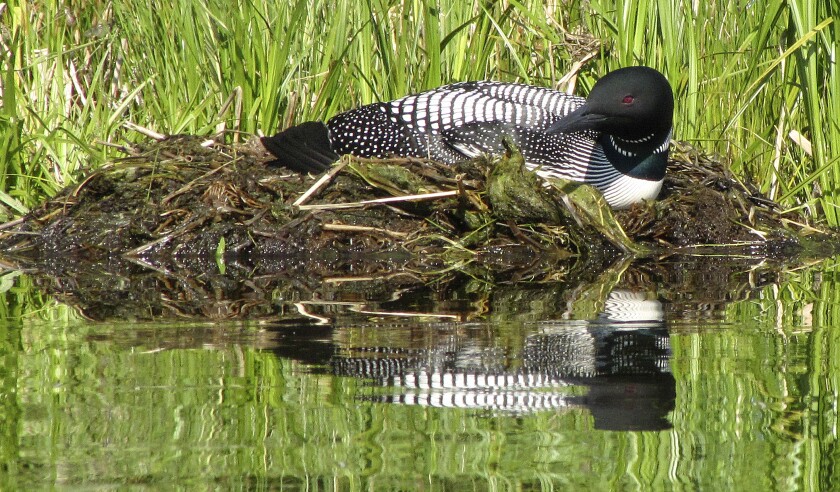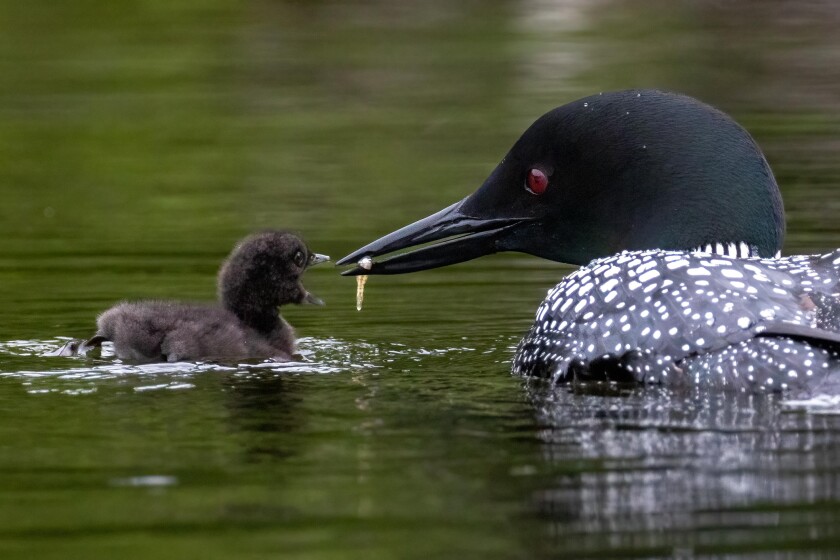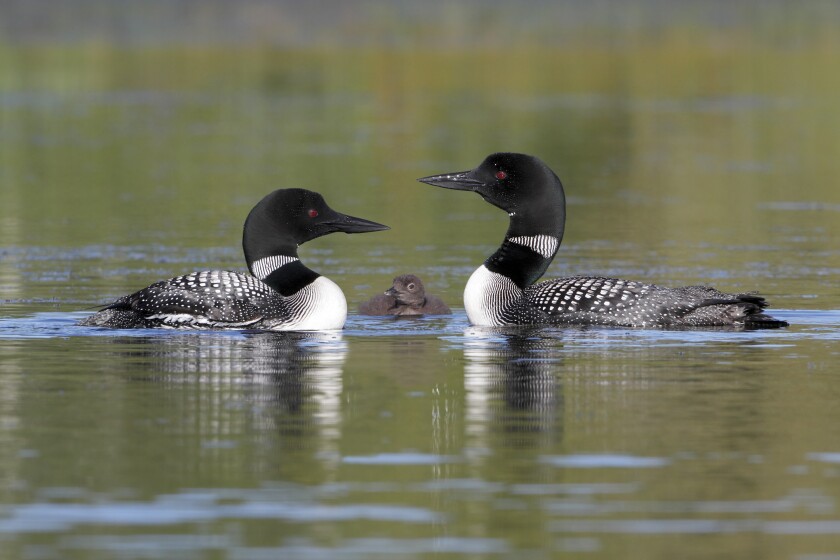DULUTH — A citizen science effort that began 30 years ago and has accumulated reams of data on Minnesota's loon population still needs more volunteers to check for loons on northern lakes this summer.
The Minnesota Loon Monitoring Program sends volunteers to hundreds of lakes in six regions statewide to count how many loons they see.
ADVERTISEMENT
This year’s survey will be conducted between June 28 and July 8, with volunteers spending a few hours on one morning at their assigned lake.

Some lakes are small enough to be surveyed from shore with a good pair of binoculars. On others, volunteers will need a boat, canoe or kayak to cover more water. Some are easy to access, some are back in the bush.
Volunteers search lakes larger than about 10 acres because loons, which can’t walk on or take off from land because their legs are too far back on their body, need a long water runway to take off. Loons are also less likely to be found in shallow lakes that often contain more vegetation, which makes it harder for them to find fish.
Volunteers are needed in three of the six research regions:
- Aitkin and Crow Wing counties — Lily, Spruce, Sweetman and Thirty-One lakes.
- Cook and Lake counties — Artlip, Bonanza, Bulge, Caribou, Cross River, Dick, Fox, Little Wilson, Peterson, Rice, Slip, Silver and Silver Island lakes.
- Itasca County — Batson, Big Island, Bill’s, Doan, Ethel, Highland, Little East, Pear, Pickeral, Plum, Snow and unnamed lake 31-0661.

Last year, hundreds of volunteers and DNR staff counted loons on 574 lakes. But that’s the second-fewest number of lakes surveyed since the program began in 1994. Participation has been down since the pandemic and hasn’t rebounded yet, so the DNR is trying to recruit a new bevy of volunteers to hit more lakes.
"As our volunteers are getting older, and retiring out of the program, we are having some trouble recruiting new volunteers," Gaea Crozier, the DNR's nongame wildlife specialist in Grand Rapids, told the News Tribune. "These surveys are fun, and also a great way to get kids outdoors and involved in science."
Minnesota loon population OK, but …
This will be the 31st year for the loon survey that has collected extensive data used by the DNR to monitor the overall health of the official state bird’s population.
ADVERTISEMENT

The quick summary from 30 years of data is that the state’s loon population is mostly “stable,’’ according to the DNR’s annual loon report.
Did you know?
Minnesota has about 12,000 adult loons across the northeastern two-thirds of the state each summer. Most of those loons spend their winters in the Gulf of Mexico.
But there are some subtle issues. Adult loon abundance — how many loons per 100 acres of each lake — is increasing in the Aitkin/Crow Wing, Becker, Kandiyohi and Otter Tail regions but is declining in the Cook/Lake and Itasca regions. The lakes surveyed in Cook and Lake counties have seen a 1.3% annual decline in adult loons.
A more noticeable trend has emerged with how many juvenile loons are counted each summer, with declining numbers of juvenile loons counted in five of the six regions surveyed. On the Cook and Lake County lakes, the decline in juveniles has hit 1.9% annually, with a 1.8% annual decline in Itasca County.
“Any downward trend in reproductive success of loons, regardless of how slight, is concerning and will continue to be monitored closely in future,’’ the 2024 loon report notes.
Loons require clean water, stable water levels for nesting and healthy populations of fish to eat. Clean, clear lakes are especially important because loons hunt for fish underwater by sight. Researchers note that loons are a bellwether species for how Minnesota’s lakes are doing, with climate change expected to push loons farther north, potentially out of the state entirely in coming decades.
“The long-term declines we have detected appear to be very gradual, and there could be more than one explanation for these trends,’’ the DNR report says, adding that they are looking at ways to find out what issues are at play, “including the possibility that these apparent declines are influenced by development activities around lakes, increased recreation, extreme weather events, species-wide population declines’’ and other factors.
A Wisconsin research project that’s now expanding into north-central Minnesota found that loons are declining in parts of the Badger State due to reduced water quality caused by runoff from land. That increased runoff is spurred by increasingly bigger rainstorms fueled by climate change.
ADVERTISEMENT
The research, published in the recent edition of the journal Ecology and conducted on lakes in northeastern Wisconsin, found dirtier water was the likely culprit after tracking a 22% decline in loon numbers over the past 27 years in the study area.

To volunteer
For detailed information on what lakes still need surveyors from June 28 to July 8, and how to volunteer, go to and click on the "Volunteer Map" button under “Sign up for a lake.” Lakes shaded in green still need volunteers.
For more info
Contact the following regional DNR loon monitoring coordinators:
- Aitkin and Crow Wing counties: Karen McLennan, 218-203-4352, karen.mclennan@state.mn.us.
- Becker and Otter Tail counties: Kristie Brezina, 218‐671‐7977, kristie.brezina@state.mn.us.
- Cook, Itasca and Lake counties: Bryonna Persing, 218-735-3962, bryonna.persing@state.mn.us.
- Kandiyohi County: Dorie Tess, 507-233-1250, dorie.tess@state.mn.us.
















